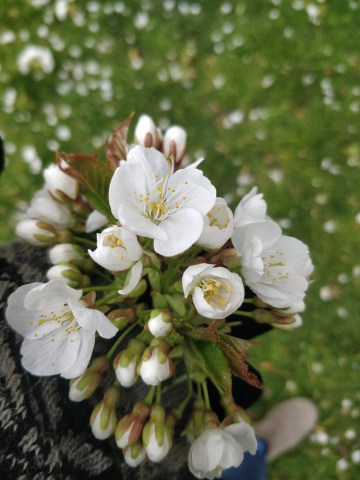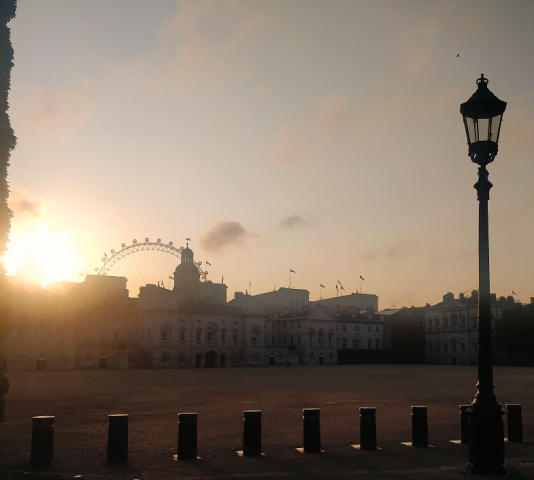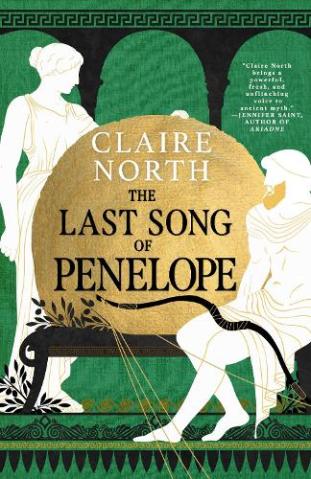A Jog on a Wintery Sunday
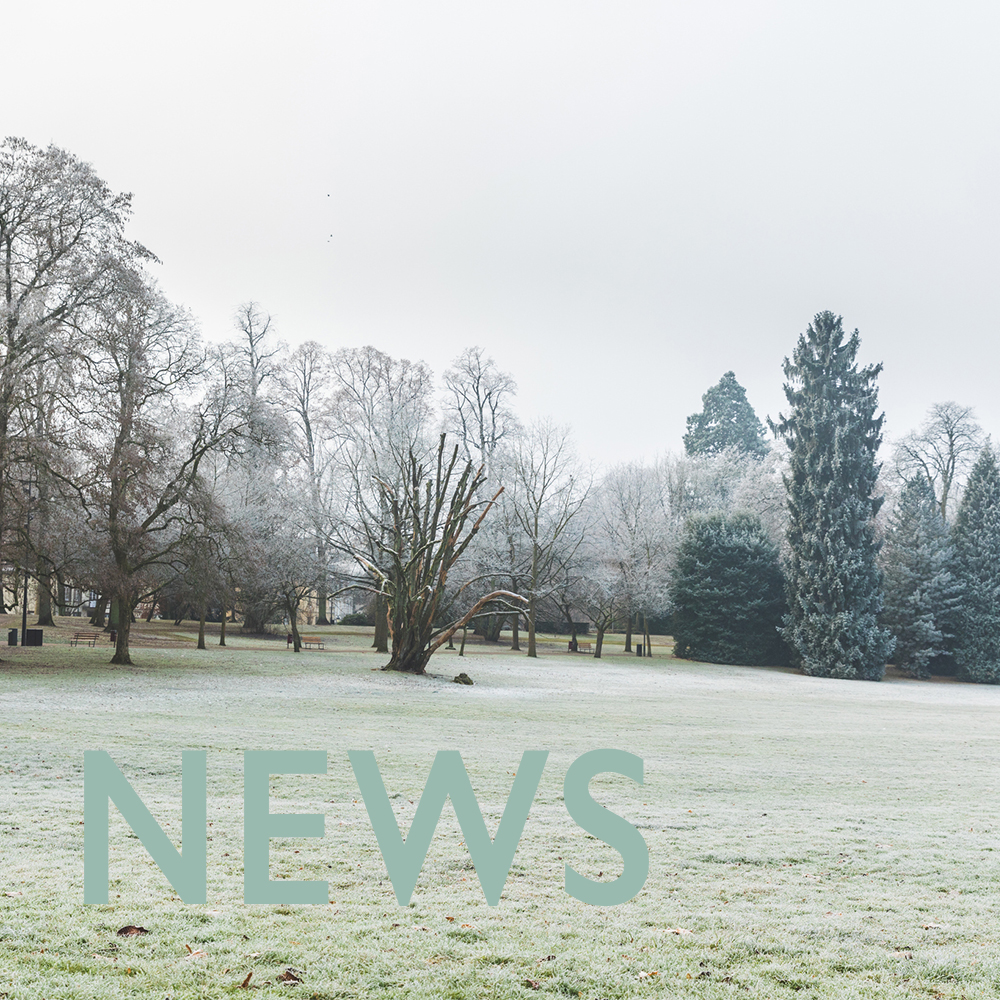
Did I mention I’m training for a half marathon? And that you can sponsor me as I raise money for Macmillan Cancer Support as one of the very few perks of this otherwise ridiculous idea….?
Oh, the training part. In winter the cold air has a habit of setting my asthma off, and my legs definitely feel more sluggish even with a warm-up. My usual 4km it takes before my shins don’t hurt is now more like 5.5km, but damnit, the sun is out and the day is beautiful, so off we go….
The winter light in London is an intense, low thing, platinum bright infused with a touch of pale gold. Even at eleven a.m. the angle is shallow enough that it cuts through the city like a knife, picking out one side of a street and leaving the other sharply, brutally in shadow. Sometimes as you run… jog… shamble groaning… along the streets of Bloomsbury, the light pops out at you like a punch to the face. Where the leafless trees are taller than the houses, their upper branches are caught in reddish-orange illumination, and giddy squares of reflected light bounce off the windows on the other side of the street. Bloomsbury on Sunday is quiet, the odd taxi and occasional car, jingling bicycles and people walking to Russell Square, wrapped in face-concealing scarf and big wooly hat. The houses are classic Victorian terraced jobs, grey brick and white window ledges sporting the odd shivvering geranium. The shops on Lamb’s Conduit Street sell bespoke hand-stitched cushions for discerning wealth, French cheese, the finest beard tickling in Camden and shoes that aren’t so much about walking, as they are about lifestyle, whatever that is. The back streets are quiet, the distant rush of a red bus visible a few hundred metres away where they meet the main roads – fish and chips, a butcher’s shop, the corner newsagent, Vietnamese pho and cupcakes.
Past St. George’s Church, and smack. Kingsway is a grunting, rumbling lizard, traffic shuffling in too-tight lanes behind too-big a queue of buses. Tourists squint against the glare of the sun, a little lost, trying to work out which way to Euston, which to Holborn, turning their maps this way and that. There is the smell of take-out noodle, the laughter of groups of kids – I’m now old enough that this describes anyone younger than thirty – who’ve just had a coffee, a cheap pizza and a catch-up. Some black cabs are electric, the usual teeth-judder of their engines gone. The same with the buses, their usual roar replaced with a heavy whine as they slug from stop to stop. But most vehicles are still combustion, the smell of the street mixing with the hard roar.
Keep going, towards the British Museum. The roast-nut sellers are out, sizzling and popping caramelised peanuts in a dirty pan. The Falun Gong protesters are not, though the rest of the week they sit outside the high, black museum gates, sometimes meditating, always handing out leaflets, occasionally blasting music from a portable black speaker. Families going into the museum chatter, children’s voices rising high above their parents. The British Museum is surely far too big and magical to not play hide and seek in, right? One street away, and the sound of children vanishes to replaced by quieter couples as they wander past the ceramics shop and the rows of windows selling relics of bygone ages, or kilts, or bubble tea. A few birds are calling to each other from the high gutters, their sound growing steadily over the last few weeks, as if they too have grown bored of winter and are counting every minute gained between now and sunset.
A left turn through the smell of kimchi and noodles, into another traffic-snarled hellhole where New Oxford Street and Cambridge Circus collide in a mess of one-way streets, traffic lights and frayed tempers. They are digging up Cambridge Circus at the moment, but on a Sunday the usual rata-tat-tat of ripping stone and thrown dirt has stopped, and occasionally all lights are red, or the traffic is distant, and you can hear again the call of birds and people chatting as they head into Covent Garden, or towards Tottenham Court Road.
I don’t usually come this way, but I want to go to Oxford Street and see if I can buy a bath bomb or bubble bath or… anything, really… that I can sink into on my return from the run to take away some of the aching in my bones. I’m twelve minutes too early, with shops not really opening until 11.30 a.m. on a Sunday – except for the ubiquitous sports shops. Heading inside, as they’re vaguely warm and I am, I suppose, a runner in the market for runnery-type-things. The music is pounding, poppy not-quite-rap, pounding, framing implausible pictures of beautiful bodies looking angry in expensive shoes. “Don’t be caught chilling!” advises a poster, in stark contrast to the general vibe of chilling out and smelling the essential oil that seems to be in fashion at the moment. Escalators send you up, but no one wants to let you know how to get down to the exit again. Lyrics extol the virtue of hating your haters and keeping your babes in place. I end up leaving within 60 seconds, and don’t wait to buy bubble bath next door. I can have a shower instead.
Picking up the pace again, and my legs are finally starting to feel vaguely functional in time for Fitzrovia. Similar to Bloomsbury, there is a grid-like feel to this part of town, with its terraced offices of brick and ground-floor restaurants offering Veganuary alternatives and strong coffee roasted by people with opinions about beans. The area is more office-orientated, albeit offices nestled inside painted Victorian houses where once there stood a slum. Dry cleaners, teeth-whitening, sandwich bars, and a little incongruously the West End NHS blood donation centre where I dutifully churn out Pints For Mini Cheddars once every few months. On Sunday there is a hint of the residential life that is tucked away down the mews or in the tiny flats laced up the staircases of the red-brick mansions that line the backstreets to Euston Road. A door slams on a man, hands full with milk and keys. I swerve to avoid baby buggies pushed by women with huge sunglasses balanced beneath their winter hats. The sound of footsteps, faster and heavier than mine, announces a jogger for whom the idea of the sub-one-hour 10km run is an easy saunter, as compared to the illusive wheezing dream I find it.
Then, Euston Road – one of the busiest, biggest roads in London. A fat pipe that skims round the Congestion Charge Zone; sirens from the ambulances rushing to UCH; heavy gurgling trucks and lorries, horns parping and the hum of the Circle Line beneath your feet. Not even the sunlight can redeem this particular junction, though the full strangeness of the London landscape is at least apparent here. Behold – a church, or perhaps fairer to say an ex-church-turned-corporate-venue, a hint of artificial flowers visible through its open doors, floodlights outside, squatting proudly in an island of one-way traffic. To the right, an office complex of black and white, a chess set of buildings, about as charming as checkmate. Inside that corporate space are the headquarters of banks, an employee gym, an over-priced cocktail bar, a pizza place and an unexpected, incongruous and remarkably good theatre with bright orange seats. Private security prowl the banks of hemmed-in-grass between the glass walls, splatted down like an apology in the middle of a sea of grey, and an LED sculpture up one wall shows a woman walking with a certain suave to her stride, from where or to where, no one knows.
On the other side of the church – a hidden warehouse tucked up a tiny side-street, dirty brick and small, tight windows. It backs directly onto the millionaire’s mansions – huge, creamy stoned buildings of such laughable opulence I feel myself getting more socialist with every moment. Oh sure, with their wide bay windows the light right now, spinning the shadow of the BT tower across the streets like a sundial, must be flipping stunning. But how strange that a city like London, which grew from fire and slum, has given up so much space to wealth.
Still, here comes the good bit….
Across the road and into Regent’s Park, one of the expansive, beautiful bits of wide green in London. The first section is all winter roses trimmed and ready for spring, the surface of the small fountain cracked with ice. A grand pedestrian boulevard runs from this southern entrance to the northern exit in Camden, past London Zoo and the smell of fish fed to the penguins. Kids on kick-scooters weave in and out of each other; parents and couples walk hand in hand, voices in every language. The grass is looking a little worse for wear after months of rain and gloom, but the first cherry blossom is out and tiny red buds on the tips of the trees promise fresh leaves to come. Over into the main section of the park, the paths weave round the sports fields, full on a Sunday morning with voices calling out as games are played in studded boots. “Leave it! Pass! Noooooo!”
Rugby, football and cricket are the main offerings, watched over by a raised up panoptican of glass café, around which muddy players of every age struggle into clean boots after a game. Runners of every size and shape pass me by. The zippy-zoomy guys in shorts and a t-shirt, glowing women with long, flapping pony tails and, more akin to me, panting ladies with jackets tied round their midriffs who reach their waiting friend on a bench and wheeze: “That was nearly a mile!”, cheeks puffed like crimson chipmunks.
The Regent’s Canal frames the top of the park, bridges lined with converted gas lamps. “Do you really exercise in winter?” one friend enquires of another, voice aghast, as the pedestrians and joggers try to find space past each other. There is a running track on one side of the canal, one of very few that I have personally encountered in London. This morning, mirror sunglasses pressed around her head, it is being ruled over by an elderly lady who looks like she could take me in a fight, prowling in a loop and swinging her arms wide against the cold.
Down to the canal, where the cold morning has deterred the summer punts, complete with guitar-playing student serenading tourists with pop ballads in a minor key, for which perhaps we can give thanks. The cold has dampened the usual smell of the aviary to the left, and the wild African dogs that gamble on the south side of the canal have clearly chosen a warmer place to huddle today. A three-storey floating Chinese restaurant marks the bend north, absurd and dazzling in red and green. High mansions tower above spray-painted walls depicting Amy Winehouse, deriding Trump, Boris and the current ruling bigots of this world. In summer, the paddle board school teaches ‘aquatic yoga’ which I think just involves doing yoga on a quay, rather than on an actual paddle board – but hard to tell. Beneath the railway line and the old red bridge, into Camden Lock itself and the run is forced to slow to a walk for the people crammed into the cobbled square. Smells and sounds rush in, deafening after the quiet of the canal. Fried chicken, sugar and lemon, chilli, ketchup, starchy rice, sizzling nuts, coffee, spilt beer, mashed up chickpeas, pie and gravy – every table is full of people eating something different, some poking at their meal with gloved hands clutching tiny wooden forks, others with fingers out, shovelling their grubs with clear delight. As you move through the market, a different sound assails you every few steps from each stall – voices calling from the traditional, “Roll up, roll up!” to market holders bantering with their neighbour or customers. Everyone is tuned to a different radio station or playlist, Latin guitar to cheesy pop to indie drawl to thrumming beats. Wiggling through the stalls and back down to the canal, you can pick up pace again a bit as you drop down, towards the new developments that have sprung up along this stretch of water. A film crew is prepping for a shoot, and look bored, and cold, as is the movie way. The bridges along this stretch are low, the paths narrow. There’s nearly a collision as I try to pass a group of pedestrians from behind, singing out apologies, and a speedy guy charges in from the front, with a middle-of-the-path righteousness that frankly leaves me feeling a bit embarrassed about being a runner. Ducks and coots chase each other across the water, hostilities in ten-second bursts of indignation. The path round here seems to be wet no matter the time of year, and in autumn the kids from the estate above sometimes delight in trying to drop wet leaves on the heads of the passers-by below. The Eurostar is coming home over past the converted gasometers at Camley Park, a metal-shrieking crawl. The high speed train to Kent is picking up speed in the opposite direction, heading for the ear-popping tunnel to Stratford.
At the fairly new Granary Square, there are increasing signs of actual human life to compliment the rebuilt red brick, grey iron and sleek, curving glass. Red and yellow paper banners hang between the walkways, and the restaurants and cafes, quiet for so long, are finally showing signs of life as people start to come to the area for its own sake, rather than just as a place they accidentally got lost in while trying to find their way out of Kings Cross. Posh shops sell bad design in polished chrome and copper, but there’s the odd ‘boutique’ charity shop too, and coffee by the excellent Redemption Roasters, a theatre, an arts school, a supermarket and most importantly if you’ve mis-judged your own water consumption, free toilets.
Following the curve of the canal round, there’s also a staple of the waterways – a floating bookshop, complete with placid dog that somehow seems to attract all the other dogs of the area to form a little community of fur around the plastic chairs that get set out by the boat.
Then on, past converted warehouses to the south and council blocks to the north, community garden patches and kids fishing with magnets for the broken, mirky treasures at the bottom of the canal. At Islington Tunnel, you’re forced to go up into the streets as the canal vanishes into a black maw, only the thinnest pinprick of illumination at the far end to suggest the tunnel sees daylight again. Islington is traffic, kids, families out for the Sunday shop, bickering, laughter, the police cars heading into the yellow slab of a station, children barging into adult’s legs on narrow pavements, the rattle of the shopping cart as one man tries to manoeuvre fifty back into their home.
It’s also where you find hot chocolate and, if you are so inclined, a warm bus, and where this run ends, slurping happily as the winter sun turns the afternoon golden.
